
Director, Book Publishing, Abe Ogden; Managing Editor, Greg Guthrie; Acquisitions Editor, Victor Van Beuren; Project Manager, Wendy M. Martin-Shuma; Production Manager, Melissa Sprott; Composition, ADA; Cover Design, Kim Woody; Printer, Data Reproductions.
2014 by the American Diabetes Association, Inc. All Rights Reserved. No part of this publication may be reproduced or transmitted in any form or by any means, electronic or mechanical, including duplication, recording, or any information storage and retrieval system, without the prior written permission of the American Diabetes Association.
Printed in the United States of America
1 3 5 7 9 10 8 6 4 2
The suggestions and information contained in this publication are generally consistent with the Clinical Practice Recommendations and other policies of the American Diabetes Association, but they do not represent the policy or position of the Association or any of its boards or committees. Reasonable steps have been taken to ensure the accuracy of the information presented. However, the American Diabetes Association cannot ensure the safety or efficacy of any product or service described in this publication. Individuals are advised to consult a physician or other appropriate health care professional before undertaking any diet or exercise program or taking any medication referred to in this publication. Professionals must use and apply their own professional judgment, experience, and training and should not rely solely on the information contained in this publication before prescribing any diet, exercise, or medication. The American Diabetes Associationits officers, directors, employees, volunteers, and membersassumes no responsibility or liability for personal or other injury, loss, or damage that may result from the suggestions or information in this publication.
 The paper in this publication meets the requirements of the ANSI Standard Z39.48-1992 (permanence of paper).
The paper in this publication meets the requirements of the ANSI Standard Z39.48-1992 (permanence of paper).
ADA titles may be purchased for business or promotional use or for special sales. To purchase more than 50 copies of this book at a discount, or for custom editions of this book with your logo, contact the American Diabetes Association at the address below, at booksales@diabetes.org, or by calling 703-299-2046.
American Diabetes Association
1701 North Beauregard Street
Alexandria, Virginia 22311
DOI: 10.2337/9781580405317
Library of Congress Cataloging-in-Publication Data
Harris, Michael A. (Michael Avram), author.
Teens with diabetes : a clinicians guide / Michael A. Harris, Korey K. Hood, Jill Weissberg-Benchell.
p. ; cm.
Includes bibliographical references and index.
ISBN 978-1-58040-531-7 (alk. paper)
I. Hood, Korey K., author. II. Weissberg-Benchell, Jill, author. III. American Diabetes Association, issuing body. IV. Title.
[DNLM: 1. Diabetes Mellitus--psychology. 2. Adolescent Development. 3. Adolescent. 4. Parent-Child Relations. 5. Self Care. WK 810]
RJ420.D5
616.46200835--dc23
2013042491
eISBN: 978-1-58040-577-5
Contents
D iabetes is the second most prevalent chronic disease in childhood, occurring in about one of every 400500 people below the age of 20 years in the United States. The prevalence of diabetes in this age-group is second only to that of asthma. Diabetes is a lifelong disease, and children with diabetes become adolescents with diabetes and then adults with diabetes. In adults, diabetes is a leading cause of new-onset blindness (due to diabetic retinopathy), renal failure (resulting in the need for dialysis or renal transplantation), nontraumatic amputations, and macrovascular disease (contributing to cerebrovascular [stroke] or coronary artery [heart attack] disease). According to the Centers for Disease Control and Prevention, in 2012, diabetes was the seventh leading cause of death in the U.S. and was a major contributor to the first (heart disease), fourth (cerebrovascular disease), and eighth (renal disease) leading causes. Therefore, overall, diabetes is a devastating disorder.
Metabolic control of diabetes (mostly, but not exclusively, glycemic/glucose control) is clearly associated with the long-term outcomes of diabetes. Better glycemic control, as determined by hemoglobin A1C, when started relatively early in the course of diabetes (even during adolescence), reduces the subsequent risks of retinopathy, nephropathy, neuropathy, and macrovascular disease. Although this fact has been clearly demonstrated for type 1 diabetes by the Diabetes Control and Complications Trial (DCCT)/Epidemiology of Diabetes Interventions and Complications (EDIC) Study and for type 2 diabetes by the U.K. Diabetes Prospective Study (UKPDS), morbidity and mortality associated with long-term diabetes complications still occur at an unacceptable rate.
Despite advancing knowledge over recent decades, the physiology of glucose metabolism and the pathophysiology of diabetes are not completely understood. Even after more than 90 years since the discovery and initial use of insulin to treat diabetes by Banting and Best, normalization of metabolic control remains an elusive goal for most people with type 1 and many with type 2 diabetes. For type 1 diabetes, which most commonly starts during childhood and depends on insulin replacement as the mainstay of treatment, the development of improved insulins and insulin analogs, self-monitoring of blood glucose (SMBG), and continuous glucose monitoring (CGM) and insulin pumps (continuous subcutaneous insulin infusion [CSII]) has significantly improved long-term outcomes and quality of life. However, normalization of metabolic control is still not a reality for most.
Managing diabetes requires attention to detail to a complex and changing medical regimen, usually multiple times a day. Diabetes management affects and is affected by every aspect of daily life. There is no vacation from the procedures related to diabetes management. Perhaps more than any other chronic disease of childhood, with the possible exception of asthma, diabetes requires continuous attention by the individual and his or her family and caregivers. The complex nature and imperfection of insulin replacement and the diabetes management regimen place substantial burdens on patients and their families. This burden is present at all ages and stages of life with different implications at each stage. However, these burdens are most challenging during adolescence. The nature of adolescence and the struggles prominent during this stage of psychosocial development conflict with the demands and continual immersion required to optimize metabolic control of diabetes. And even when implemented diligently, the results may be less than anticipated. Clearly, there is more to optimal diabetes management than providing the right amount of insulin at the correct times relative to nutrient intake and exercise. Optimal management requires an understanding and appreciation of the stresses and burdens of diabetes superimposed on the underlying social and family structure and characteristics.
In this book, Drs. Michael Harris, Korey Hood, and Jill Weissberg-Benchell, three child psychologists with considerable personal, clinical, and academic experience with children and teenagers with diabetes, use their collective experience to provide a developmental and psychosocial context for optimizing diabetes management in teens. Further, they highlight real-world examples of the conflicts and challenges that exist in adolescents with diabetes and their families and give practical approaches to facilitate resolution. Each chapter tackles a different aspect of adolescentparent and adolescenthealth care provider interactions and uses examples of approaches to deal with the given situation. Health care providers caring for adolescents with type 1 diabetes need to apply these examples and approaches when approaching teenagers with type 1 diabetes and their families.
Next page
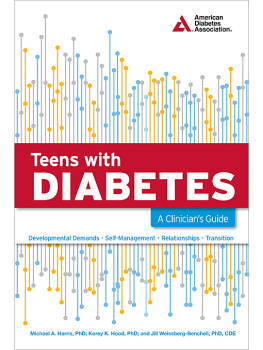
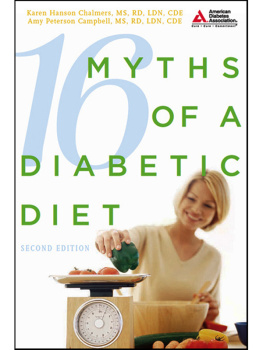


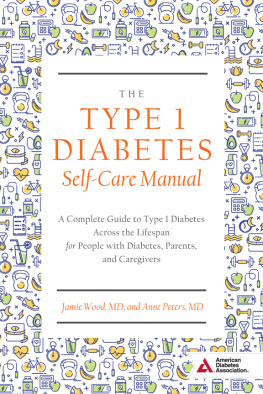

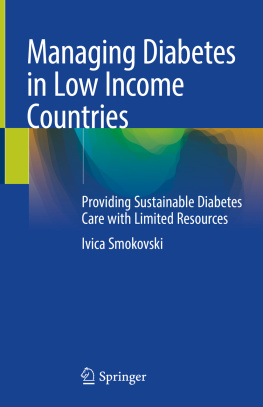
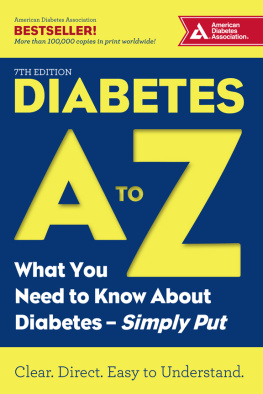
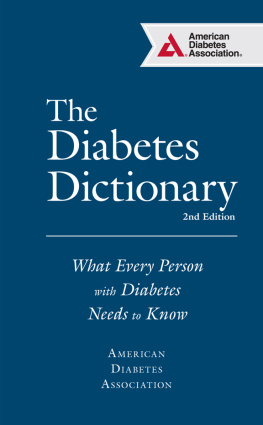


 The paper in this publication meets the requirements of the ANSI Standard Z39.48-1992 (permanence of paper).
The paper in this publication meets the requirements of the ANSI Standard Z39.48-1992 (permanence of paper).